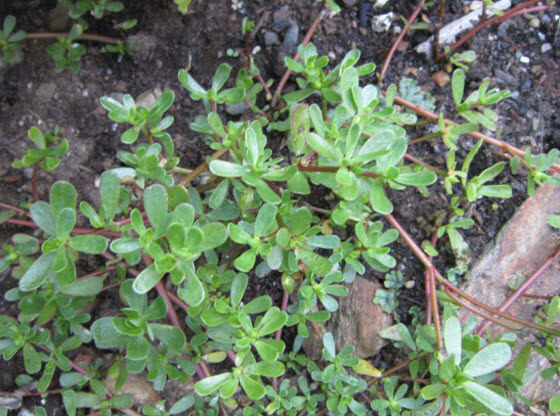
An Edible, Nutritious Weed that Grows Like... a Weed!
ADVERTISEMENT
Just an FYI; Purslane is known out West as "Verdolaga." It grows like mad in the citrus groves here in southern California. The Mexicans have known, grown, and eaten this stuff forever! My Mexican-born wife cooks it up whenever it's available in our garden. We also have a source at an organic farm. The farmer lets us pick as much as we want, as it's something that grows, well, like a weed, and he doesn't sell it. If you're going to harvest from a grove, ask the grover for permission for two reasons; one, grovers don't like trespassers in their groves, and two, they might be using an herbicide or pesticide you don't want to be eating. 'Same goes for harvesting from farmlands. When harvesting, get the plants before they start to flower. They start tasting bitter after that. Pick a lot of it, as it's a succulent , and succulents cook down to nothing because of their water content. You'll be surprised how good this stuff tastes!
I've been growing purslane for years and absolutely love it; however, by the time the plants get to be about a foot tall, the leaves get pretty munched on by grubs, Japanese beetles, and what looks like leaf miners. Much of the foliage is still usable, but often full of little holes and not very pretty. Any tips for keeping away pests?
Hi Laura,
Sorry to hear about the pest issues with your purslane. The best approach is to be proactive and watch out for any of the pests you mentioned and picking them off before they get to munching on the leaves. Of course, it is not always easy to be consistently watching before you notice a problem. If you do notice any pests after the leaves have been affected, it is still best to pick them off and dispose of them promptly. If there is a severe infestation, you can try applying neem oil or an insecticidal soap to try and alleviate any issues once they have presented. Just make sure you wash the leaves well before consuming.
It’s not a perfect solution, but the best approach right now. Hope this helps!
My youngest grandson, 11, and I tried it straight from the garden over the weekend. He liked it enough to coax his picky eater brother, 12, to try it. My guess is they will be harvesting it for salads in the future. It was a hit.
Purslane tincture (made with vodka) is medicinal to get rid of fungal infections like athlete's foot or "crotch rot".
Do you use just the leaves or the stem also? Do you chop them up or leave them whole when you make the tincture?
is it used topically?
I had purslane in a flower basket and it was beautiful blooming pink and yellow blooms. I brought it in and planned it as an indoor plant. The pieces that have broken off, I propagated in water. Now that I look more closely at it I realize that I had it growing everywhere as weeds at my last home and killed it. Now that I live in a forest, I appreciate more of the wildflowers/weeds that are growing.
That is not purslane , it looks very much like it but its not. The same
What country did Purlane originate?









